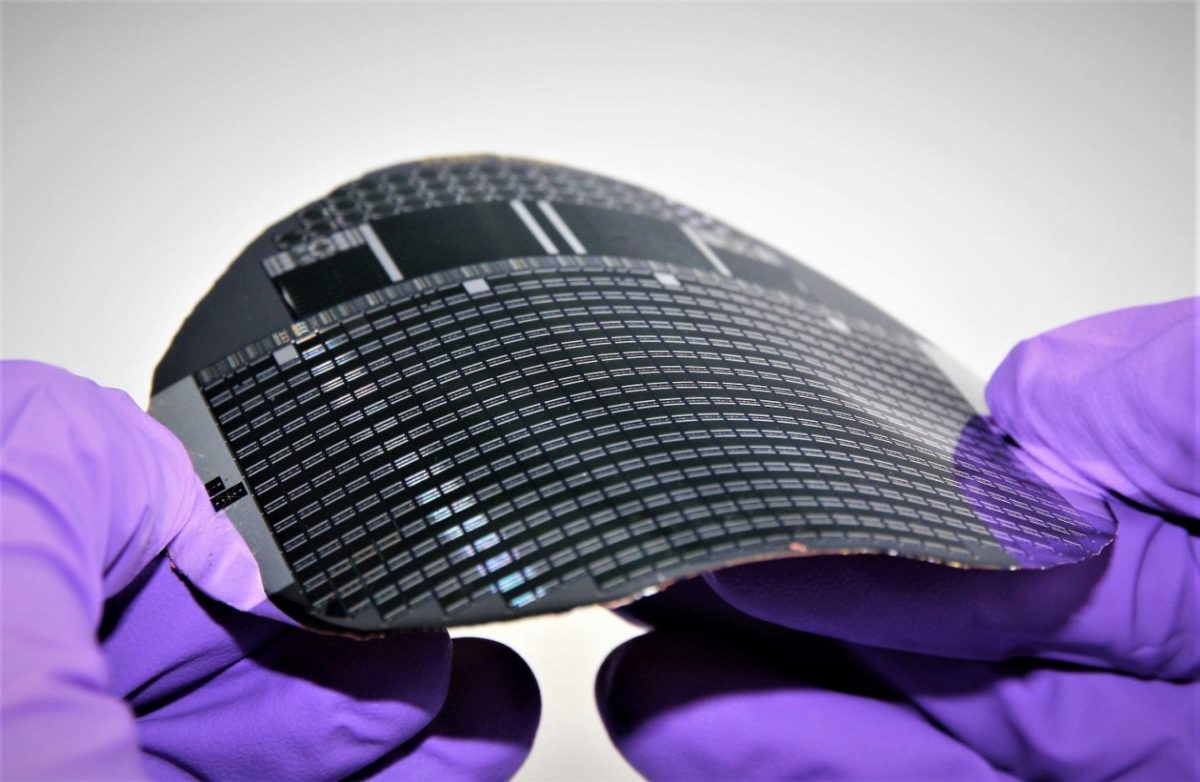From pv magazine International
Germany’s Fraunhofer Institute for Solar Energy Systems ISE claims to have achieved a 68.9% conversion efficiency rate for a III-V solar cell that can be used in laser energy transmissions systems.
“In this new form of energy transfer, called power by light, the laser energy is delivered either through the air or via an optical fiber to a photovoltaic cell whose properties match the power and the wavelength of the monochromatic laser light,” the scientists explained. “Compared to conventional power transmission via copper wires, power by light systems are especially beneficial for applications which require a galvanically isolated power supply, lightning or explosion protection, electromagnetic compatibility, or completely wireless power transmission, for example.”
Laser energy transmission systems are not very different from energy transmission systems based on microwave technology. These systems convert the power source into an emitter that generates a directional electromagnetic radiation, which is subsequently absorbed in a receiver. The latter can then convert this energy into electricity, heat, or hydrogen. These systems can be used for the monitoring of wind turbines and high-voltage lines, as well as fuel sensors in aircraft tanks and passive optical networks, among other things.
The cell was built with layers grown on gallium arsenide substrate, which was then subsequently removed, and a highly reflective mirror applied to the back surface of the ultra-thin remaining semiconductor structure. The reflector was optically optimized through a combination of ceramic and silver and the cell’s absorber was based on nitrogen-doped gallium arsenide and p-type aluminum gallium arsenide.
“This thin film approach has two distinct advantages for the efficiency,” explained the head of the Fraunhofer ISE research team, Henning Helmers. “First of all, photons are trapped in the cell and the absorption is maximized for photon energies close to the bandgap, which simultaneously minimizes thermalization and transmission losses, making the cell more efficient. Secondly, the photons additionally generated internally by radiative recombination become trapped and effectively recycled. This extends the effective carrier lifetime, thus additionally increasing the voltage.”
Other Fraunhofer ISE researchers achieved in April a 35.9% conversion efficiency for a III-V monolithic triple-junction solar cell based on silicon. In August 2020, the research institute announced a 25.9% conversion efficiency rate for a III-V tandem solar cell grown directly on silicon. This cell is a modified version of a 34.5%-efficient III-V solar cell that is manufactured through a process known as direct wafer bonding, where the III-V layers are first deposited on an aluminum gallium arsenide (GaAs) substrate and then pressed together.
Researchers at the Tampere University in Finland have recently developed a III-V multi-junction solar cell which is claimed to have the potential for reaching a power conversion efficiency of close to 50%. The National Renewable Energy Laboratory (NREL) in the United States announced last year a 32.9% efficiency for a tandem cell device utilizing III-V materials.
This content is protected by copyright and may not be reused. If you want to cooperate with us and would like to reuse some of our content, please contact: editors@pv-magazine.com.









By submitting this form you agree to pv magazine using your data for the purposes of publishing your comment.
Your personal data will only be disclosed or otherwise transmitted to third parties for the purposes of spam filtering or if this is necessary for technical maintenance of the website. Any other transfer to third parties will not take place unless this is justified on the basis of applicable data protection regulations or if pv magazine is legally obliged to do so.
You may revoke this consent at any time with effect for the future, in which case your personal data will be deleted immediately. Otherwise, your data will be deleted if pv magazine has processed your request or the purpose of data storage is fulfilled.
Further information on data privacy can be found in our Data Protection Policy.